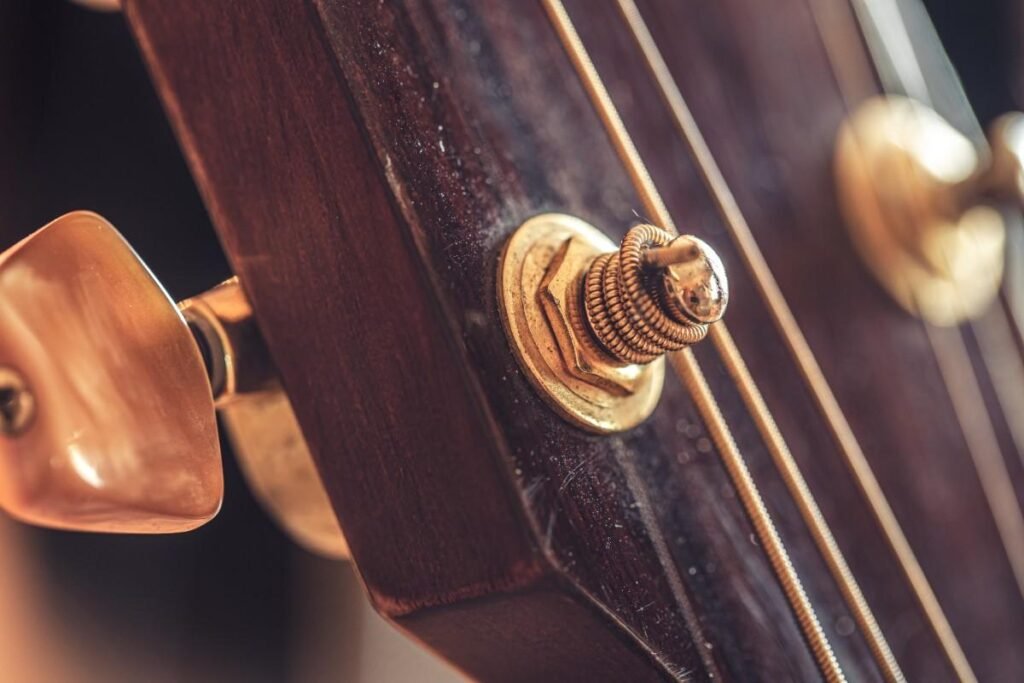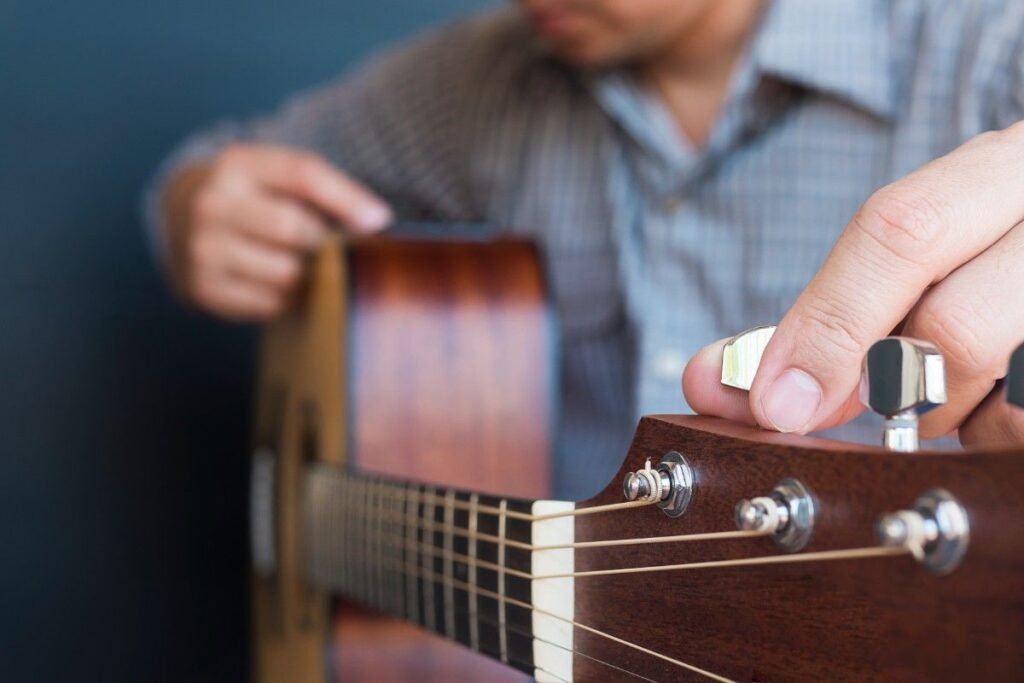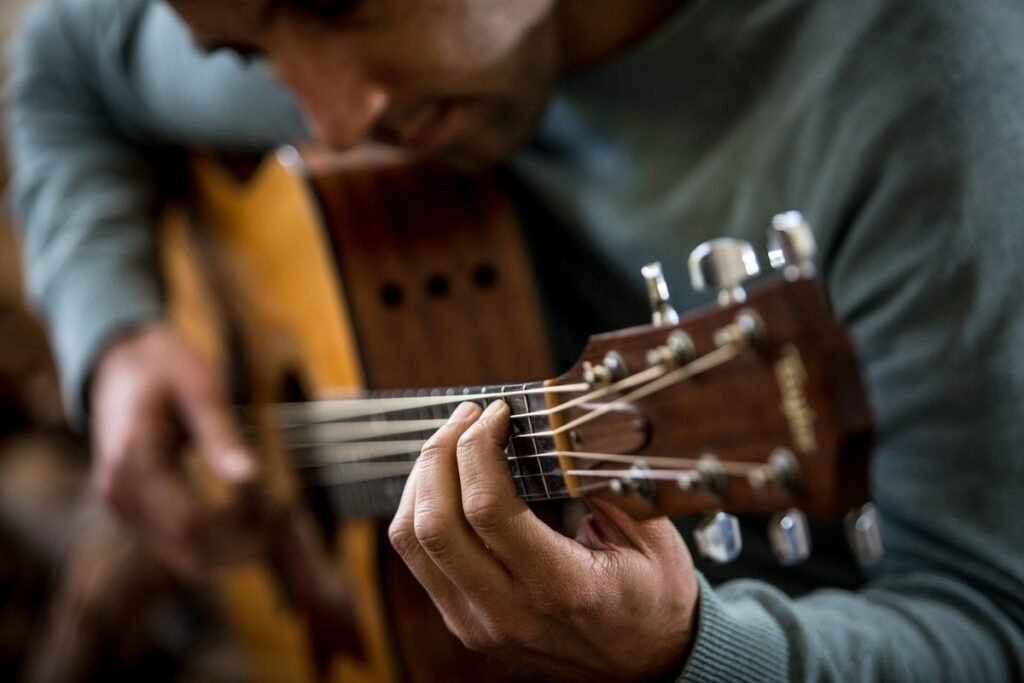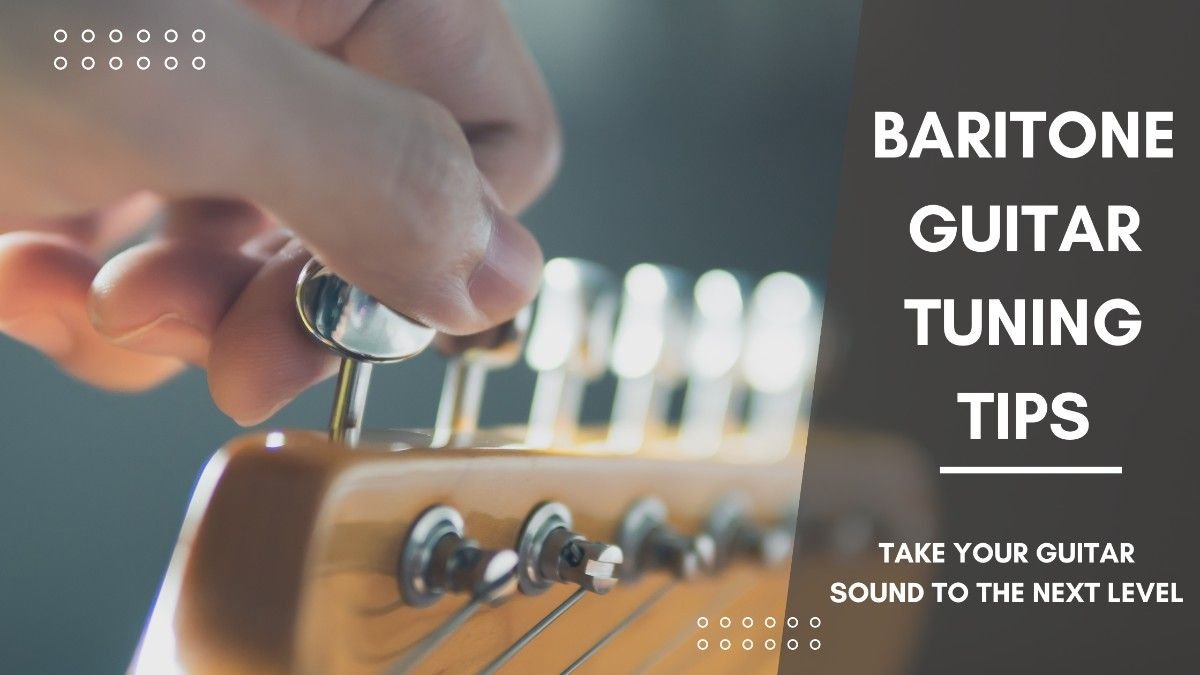Is your baritone guitar not sounding as nice as it should? Particularly if you are more familiar with standard guitars, Baritone guitar tuning might be a little difficult. Not to worry though! Using the correct methods and advice can help you to produce a rich, deep tone that will distinguish your playing.
This guide will guide you through all you need to know about tuning for baritone guitar so you will ensure your instrument produces the greatest possible sound.
Understanding Baritone Guitars
What is a Baritone Guitar?
A baritone guitar is a variation of a standard guitar with a longer scale length that lets one tune it to a lower pitch. Originally introduced in the 1950s, baritone guitars have spread to many musical genres, including metal, surf rock, and even country.
Unique Characteristics
- Longer Scale Length: A baritone guitar’s scale length is usually between 27 and 30 inches, while a normal guitar’s is between 24.75 and 25.5 inches. The strings’ increased length helps them to retain tension at lower pitches.
- Lower Tuning: Baritone guitars sound fuller and louder when tuned to B standard (B-E-A-D-F#-B) or Drop A (A-E-A-D-F#-B).
- Richer, Deeper Sound: The lower pitch and longer scale length of a baritone guitar make a sound that is fuller and darker than a regular guitar. This makes them great for certain kinds of music.
Standard Baritone Guitar Tunings
Common Tunings
- B Standard (B-E-A-D-F#-B): On a normal guitar, this tuning is exactly a fifth lower than the standard E tuning.
- Drop A (A-E-A-D-F#-B): This tuning is achieved by lowering the B standard’s sixth string down to A, providing a powerful low-end punch.
Comparison with Standard Guitar Tunings
Baritone tunings are different from the normal E tuning (E-A-D-G-B-E) on a regular guitar because they allow for deeper tones and longer bass frequencies. This makes them great for heavier music styles or for giving your playing a unique feel.

Choosing the Right Strings
String Gauge
Maintaining proper tension and obtaining the intended sound on a baritone guitar depend on choosing the right string gauge. Heavier gauge strings are typically recommended to handle the lower tunings without becoming too loose and floppy.
- Recommendations: For B standard tuning, gauges like .013-.062 are common. For Drop A tuning, you might opt for slightly heavier gauges, such as .014-.068.
String Material
The material of your strings also affects how your guitar sounds and how easy it is to play.
- Nickel: Provides a balanced tone with good warmth.
- Steel: Offers a brighter and more cutting tone.
- Coated Strings: Players who wish constant tone throughout time would find these strings a suitable choice as they resist corrosion and stay longer.
Setting Up Your Guitar
Neck Relief and Action
Optimal playability and sound depend on appropriate neck relief and motion.
- Neck Relief: Adjusting the truss rod will enable you to get the correct degree of neck relief. While too little will make the guitar difficult to play, too much relief can lead to buzzing.
- Action: Setting the action is changing the string heights above the fretboard. This may be adjusted to your playing style; whether you want a lesser action for simplicity of use or a higher action for better performance.
Intonation
Correct intonation ensures that your guitar remains in tune along the fretboard.
- Adjusting Intonation: Check every string at the 12th fret with a tuning fork. Change your saddle position depending on whether the note is sharp or flat. Proceed this way until every string is exactly in tune.

Tuning Techniques
Tuning by Ear
In the absence of an electronic tuner, tuning baritone guitar by ear can be a valuable skill.
- Using Harmonics: A more exact reference than fretted notes might come from harmonies. For the sixth string (B), the fifth fret harmonic should, for instance, coincide with the seventh fret harmonic on the five-string (E).
Using a Tuner
Electronic tuners offer precision and convenience.
- Benefits: Tuners make sure that every string is perfectly in tune, so you don’t have to guess.
- Recommended Tuners: There are tuners, like the Peterson StroboClip or the TC Electronic PolyTune Clip, that are made to handle the lower sounds of baritone guitars.
Advanced Tuning Tips
Alternate Tunings
Trying out different tunings can help you come up with new ideas.
- Examples: Different musical concepts and genres might be inspired by tuning either C standard (C-F-Bb-Eb-G-C) or G standard (G-C-F-A#-D-G).
- Benefits: Switching between tunings can make it easier to play some chord lines and fingerings, and they can also give you new sound effects.
Fine-Tuning for Stability
Maintaining stable tuning during performances is crucial.
- Tips: Stretch new strings properly, use locking tuners, and regularly check your tuning throughout your performance.
- Impact of Temperature and Humidity: Your guitar’s tuning stability may change with temperature and humidity. Keep your instrument in a regulated surroundings and think about running a humidifier in dry surroundings.
Maintenance for Optimal Sound
Regular String Changes
Old strings can sound dull and lifeless.
- How Often: Depending on how often you play, you should change your strings every 1-3 months.
- Signs: If your strings are discolored, corroded, or have lost their brightness, it’s time to change them.
Cleaning and Lubricating
Regular maintenance keeps your guitar in top condition.
- Cleaning: Use a soft cloth to wipe down the strings, fretboard, and body after each use.
- Lubricating: Applying a small amount of lubricant to the tuning pegs can make tuning smoother and more stable.

Amplification and Effects
Choosing the Right Amp
The right amplifier can enhance the baritone guitar’s unique sound.
- Best Amps: Look for amps that handle lower frequencies well, such as the Fender Bassman or the Orange Rockerverb.
- Settings: Experiment with EQ settings to find the best balance of bass, mids, and treble for your baritone guitar.
Using Effects
Effects pedals can add depth and character to your sound.
- Recommended Pedals: Overdrive, reverb, and delay pedals can complement the baritone’s deep tones.
- Tips: Integrate effects gradually into your setup, adjusting settings to suit your style and preferences.
Resolving Common Issues
Buzzing Strings
String buzzing can be caused by several factors.
- Causes: Low action, uneven frets, or incorrect neck relief can all lead to buzzing.
- Solutions: Adjust the action and neck relief, and consider having a professional setup done if the problem persists.
Tuning Slippage
If your guitar frequently goes out of tune, it can be frustrating.
- Causes: Worn-out strings, loose tuning pegs, or environmental changes can cause tuning slippage.
- Solutions: Regularly change strings, tighten tuning pegs, and keep your guitar in a stable environment.
Dead Notes
Dead notes can kill your sound and your mood.
- Identifying: Dead notes usually occur when a fret doesn’t resonate properly.
- Resolving: Have a professional luthier inspect and address any fret issues.
Bottom Line
Getting the greatest sound out of a baritone guitar requires proper tuning of the instrument. Understanding the special qualities of baritone guitars, selecting the appropriate strings, arranging your instrument properly, and investigating several tuning strategies can help you to produce a rich, deep sound that improves your performance.
Remember to maintain your guitar regularly and try several configurations to see which best fit your style. Enjoy playing!

